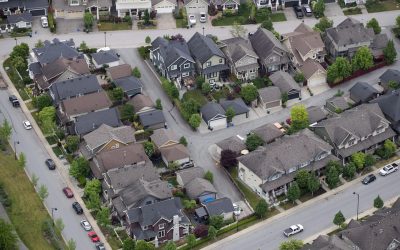Gallatin County, Montana doubled its population in the past thirty years, making it the fastest-growing region in the state. While the county’s 2.6 percent annual growth rate falls far short of the 8.3 percent rate of Loudoun County, Virginia, or the 4.3 percent rate of Clark County (Las Vegas), Nevada, it is still enough to cause stresses and strains.
A common response to such stress is to ask city or county officials to pass “growth-management” ordinances. But more than three decades’ experience with such laws in cities from Boulder, Colorado, to San Jose has shown that they do more harm than good.
Boulder attempted to slow growth by limiting the number of annual building permits to a fixed percentage of the number of homes in the city. To control what happens outside its borders, it purchased a greenbelt of open space equal to several times the land area of the city itself.
San Jose drew an urban-growth boundary around itself and (with the help of Santa Clara County) practically forbade development outside that boundary. Other cities have imposed design codes, minimum-density zoning, and other rules designed to insure that they “grow up, not out.”
Whatever the rules, they have had the same effects on all the regions that applied them. First, they rapidly made housing unaffordable to low- and middle-income families. For example, Coldwell Banker says that a house that would cost $256,000 in Bozeman would cost $441,000 in Boulder and $952,000 in San Jose.
A recent study published by the Harvard Institute of Economic Research found that housing affordability is strongly related to land-use regulation: more regulation means homebuilders are less able to keep up with the demand for new housing.
Unaffordable housing means low-income people are less likely to ever buy a home, which means they will never be able to use the equity in that home to help them start a small business or put their children through college. Home ownership is an important stepping-stone out of poverty, and barriers to affordable home ownership simply help keep people poor.
A second problem with the latest urban-planning fad of “building up, not out” is that it significantly increases congestion. While planners like to fantasize utopias of higher-density neighborhoods in which people walk or ride transit rather than drive, the reality is that doubling or even tripling Bozeman’s population density will not significantly reduce per-capita driving.
With more congestion comes more air pollution because cars pollute the most in stop-and-go traffic. In the United States, the worst polluted areas tend to be the densest because they are also the most congested areas.
While regions that applied land-use controls suffered unaffordable housing and congestion, some regions took another approach. Instead of trying to regulate how people live, they simply let people choose for themselves — but made certain they paid the full costs of their choices.
The most effective approaches relied on private means to solve public problems. Las Vegas, for example, has a publicly supported but privately operated transit system that costs taxpayers only half as much, per hour of bus operation, as publicly operated transit. This means Las Vegas can blanket the region with better bus service at lower cost, and in doing so it has attracted far more riders than regions that have spent billions of dollars on little-used rail lines.
This doesn’t mean Bozeman will suffer an urban sprawl of endless malls and housing developments. All the people who want to live in Gallatin County will never come close to paving over the entire area. People who worry about sprawl forget how big Montana really is.
Growth management has not produced any real benefits to counter the costs of unaffordable housing, congestion, pollution, and other problems. Can anyone truly believe that Boulder is more livable than the faster-growing but more-affordable Colorado Springs? Climate and casinos aside, is San Jose truly more livable than Las Vegas? Or Portland more than Tucson?
The answers are all no. Growth managers may have good intentions, but do much real harm. Regions facing rapid growth should insure that growth pays for itself through a combination of user fees and fair taxes, but they should not try to control where or how that growth should take place.
Randal O’Toole is an economist with the American Dream Coalition and author of The Vanishing Automobile and Other Urban Myths.


